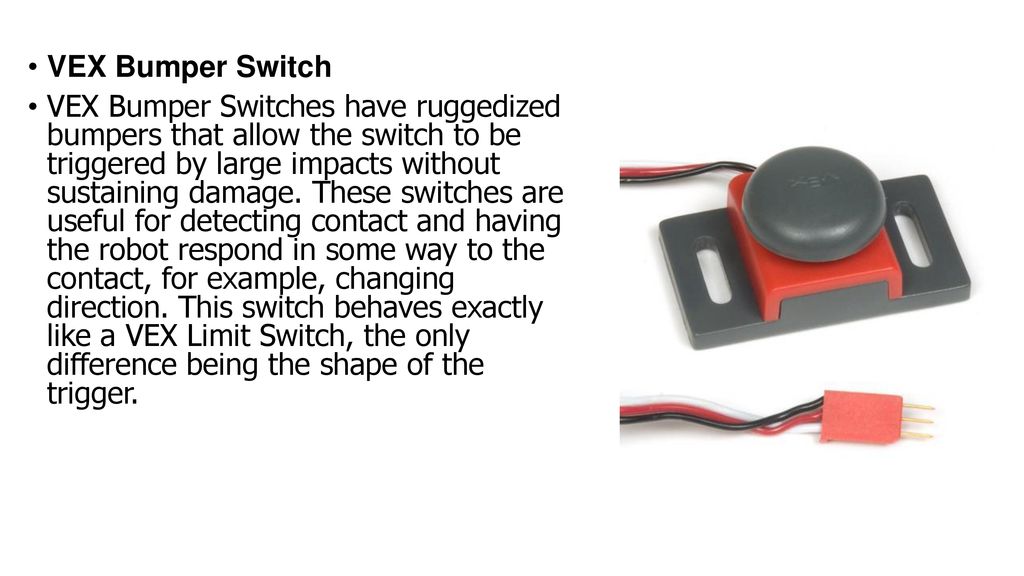

- #VEX LIMIT SWITCH PROGRAMMING HOW TO#
- #VEX LIMIT SWITCH PROGRAMMING DRIVER#
- #VEX LIMIT SWITCH PROGRAMMING CODE#
- #VEX LIMIT SWITCH PROGRAMMING SERIES#
Remember, if the white data wire gets matched up with the black ground wire, the data will face a dead-end. When plugging in any 3-wire extension, all colors have to match: line up the red, white, and black wires of each plug you’re connecting or else you will get no data.

You need to purchase 3-wire extension cables to make this happen (VEX also sells 2-wire cables, but those are not for use with sensors). Sensors are rarely installed right near the cortex and often require extension wires to get the distance necessary. * See special commentary about the red wire’s (lack of) functionality in the bump & limit switches.

The red wire supplies the power, black is ground, and white is what conveys your sensor’s data to the cortex.* VEX sensors have 3-prong plugs (photo) that will only fit into the cortex in one orientation good news-there’s no danger of getting that part backward. Having your own spare sensors with you at a competition is a good mentoring practice. At a tournament you may certainly have nice neighbors who will lend you one, but you may not have time to go out and make those requests before the next match.

ACK!Ĭoaches: Make sure that, for all sensors vital to the functioning of your team’s robot, you have one or more extras on hand when competing. You’re at a competition and some freak thing happens, and a sensor is damaged or broken. Your team has put hours and hours into their awesome competition robot, and makes nifty use of sensors.
#VEX LIMIT SWITCH PROGRAMMING CODE#
#VEX LIMIT SWITCH PROGRAMMING SERIES#
My hope is that this series of posts can help with those purchasing decisions. Sensors cost real-world $$, so as a coach or mentor, you don’t want to spend money on things your team is not likely to use or ever need. Sort of like being in the cereal aisle of your grocery store. VEX offers a large number of sensors, and if you’re new to this, you may be a bit stymied by the choices.
#VEX LIMIT SWITCH PROGRAMMING DRIVER#
When you’re ready for more precision or more sophistication in your robot’s movements-in autonomous or driver control-it’s time to add a sensor (or two). If you’re new to VEX, your team will probably start out programming with basic joystick blocks, and autonomous movements governed by turning motors on for a certain amount of time.
#VEX LIMIT SWITCH PROGRAMMING HOW TO#
My next series of posts will go through the various sensors available in VEX robotics, and provide details on what they’re used for, how they work, and how to implement them.


 0 kommentar(er)
0 kommentar(er)
